Also called the Cowper’s glands the bulbourethral glands are exocrine glands and are part of the male reproductive system. These glands produce the pre-ejaculate or the Cowper’s fluid which neutralizes any acidity caused due to residual urine in the urethra.
The bulbourethral glands also have different names like the above mentioned Cowper’s glands for English anatomist William Cowper, the glands of Littre and the glands of Morgagni. The Bulbourethral glands are comparable to the Bartholin’s glands in the female reproductive system.
Where are the bulbourethral glands located?
The bulbourethral glands are a pair and lie deep inside the perineal pouch. They are roughly the size of a pea and are placed behind the urethra. The bulbourethral glands are compound tubuloalveolar glands and lie at the penis base.
What is the structure of the bulbourethral glands?
The bulbourethral glands comprise of many lobules and each lobule has its own duct. Many such ducts of all the lobules join and form one single excretory duct. This single excretory duct is roughly around 2.5 cm long opening into the bulbar urethra. At the time of ejaculation, the bulbourethral glands contract and are therefore a sympathetic function.
What is the function of the Cowper’s glands?
When a male is sexually aroused, the bulbourethral glands produce a liquid called the pre-ejaculate or the Cowper’s liquid or the pre-cum. This can be simply described as the wetness got prior to ejaculation.
This viscous, mucous-like fluid is clear and rich in mucoproteins. Also, it is alkaline and the volume of the liquid may range from a few drops to around 5 mL. The Cowper’s liquid adds fluids to the semen during the process of ejaculation. So it can be said that they contribute to the final volume of semen.
The pre-ejaculate serves these purposes:
- The prime function is that the liquid helps to neutralize the acidic urinal residues in the urethra. This makes the conditions more hospitable for the sperm to travel through the urethra.
- It also acts as a lubricant during the sexual arousal of the distal urethra.
- Since the fluid is rich in glycoproteins they have immunodefensive properties and they act as a neutralizing buffer in the vaginal vault before the semen is released into the chemically hostile environment.
Bulbourethral Gland Pictures
What are the problems associated with the Cowper’s glands?
Cowper’s syringocele or the Cowper’s cyst is a rare disease of the Cowper’s glands. This is an under-diagnosed cystic dilation of the bulbourethral gland ducts. It is usually seen in kids but is now seen in the adult population as well. Here the cysts develop in the ducts which connect the lobules to the urethra.
The syringocele can be classified as open syringocele and closed syringocele.
Open Syringocele: In the open syringocele, there is a continuous lumen between the urethra and the cystic ducts giving rise to the problem of post-void dribbling.
Closed Syringocele: In the closed syringocele, the cystic ducts cause the duct to dilate externally pressing the urethra and this causes obstructive symptoms.
The syringocele in children can also be classified as non-obstructing syringocele and obstructing syringocele.
Non-obstructing Syringocele: The non-obstructing syringocele is associated with urinary tract infections and fever.
Obstructing Syringocele: The obstructing syringocele is associated with obstructive urine passage.
What are the symptoms of Cowper’s syringocele?
The common symptoms of this problem are urinary tract infection, fever or lack of control when passing urine. The other symptoms are blood discharge in the urethra (urine) known as hematuria, painful urination (dysuria) and post-void dribbling (leakage of a small volume of urine immediately after completing the act of urinating).
How is Cowper’s syringocele diagnosed?
- The first step is to know and study the complete voiding history. The voiding history is urine related assessment like the urine output, the amount of urine, the time of urine flow and the frequency of urination.
- Ultrasonography reveals whether there is a presence of a closed cystic lesion or open syringocele.
- For further diagnosis, antegrade and retrograde urethrography is done.
- When more data is needed then CT scan, MRI or cystourethroscopy can be implemented.
What is the line of treatment for Cowper’s syringocele?
Voiding History: The best method of treatment in both open and closed syringocele is to wait till the symptom in the patient subsides. There have been many reported cases when the symptoms resolved on their own.
Surgery: When surgery is required then endoscopic intervention is carried out by unroofing the cyst by removing its opening to the urethra. This is a simple and economical method of draining out the cyst fluid.
Some questions related to bulbourethral glands?
Q1. Are the bulbourethral glands found only in humans?
Answer: No, they are also found in many male mammals including the chimpanzee. In chimpanzees, the glands are not visible to the human eye but can be observed under microscopic examination. And among all the domesticated mammals, this Cowper’s glands are only absent in the dogs. These glands are also absent in bears and aquatic mammals.
Q2. Does growing age have any impact on the bulbourethral glands?
Answer: With growing age, the glands gradually diminish in size. In general, the men do not experience a sudden change in fertility but the process is gradual and there may be problems like erectile dysfunction or decrease in living sperm in the liquid.
Q3. What are some of the problems associated with the Cowper’s gland secretions?
Answer: Although it has not been assessed, sometimes this secretion carries with it some amount of sperm to the female reproductive tract prior to ejaculation. As a result, the contraceptive method of withdrawal prior to ejaculation fails resulting in conception.
Another problem associated with the Cowper’s glands is the excessive amount of production of pre-ejaculate in some men. This results in psychological problems in men because some of the men get embarrassed due to the resulting excessive wetness even when there is only a sexual arousal. The best solution to this problem is that the patient needs to be reassured and counseled.

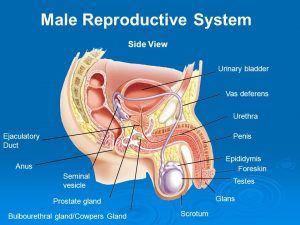
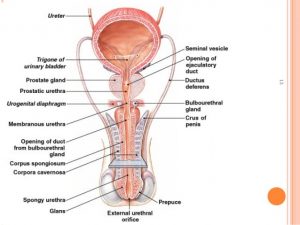
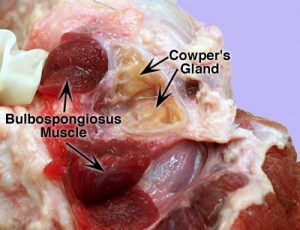
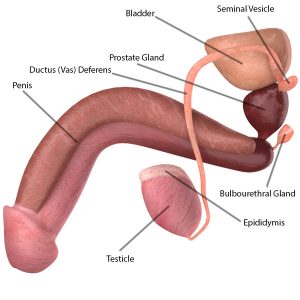
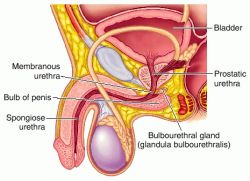
No comments yet.